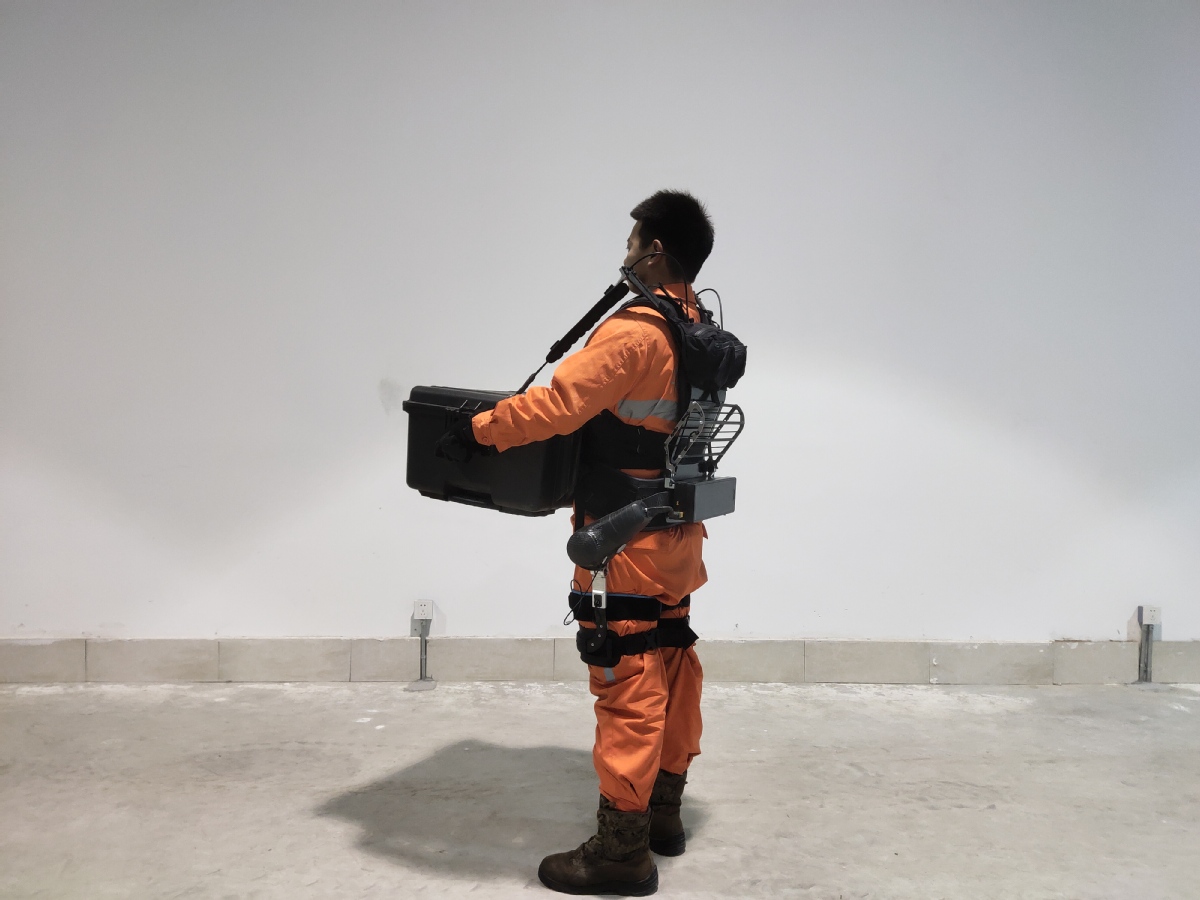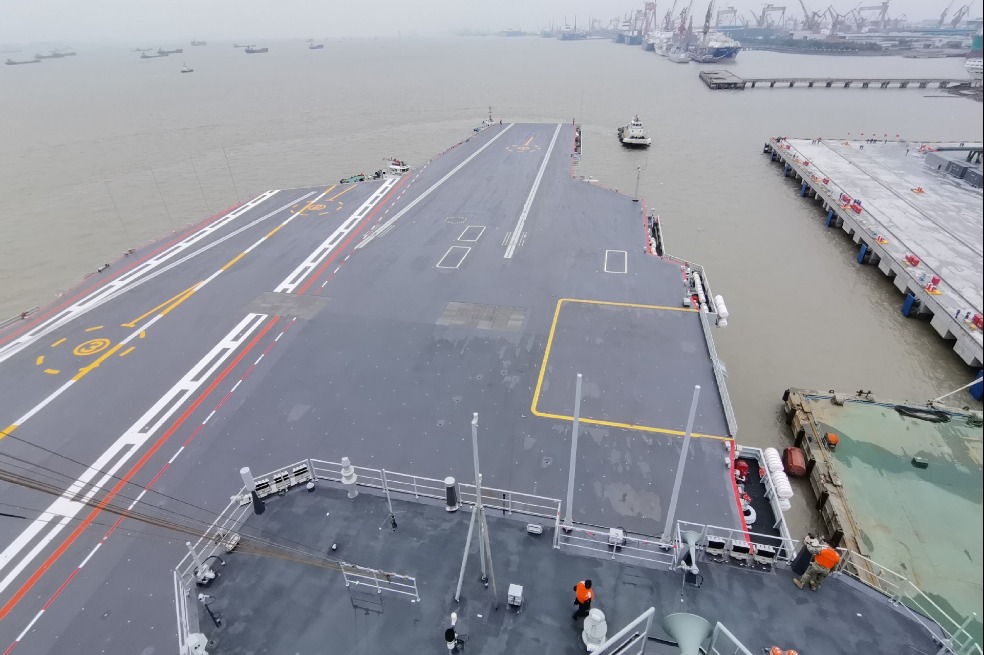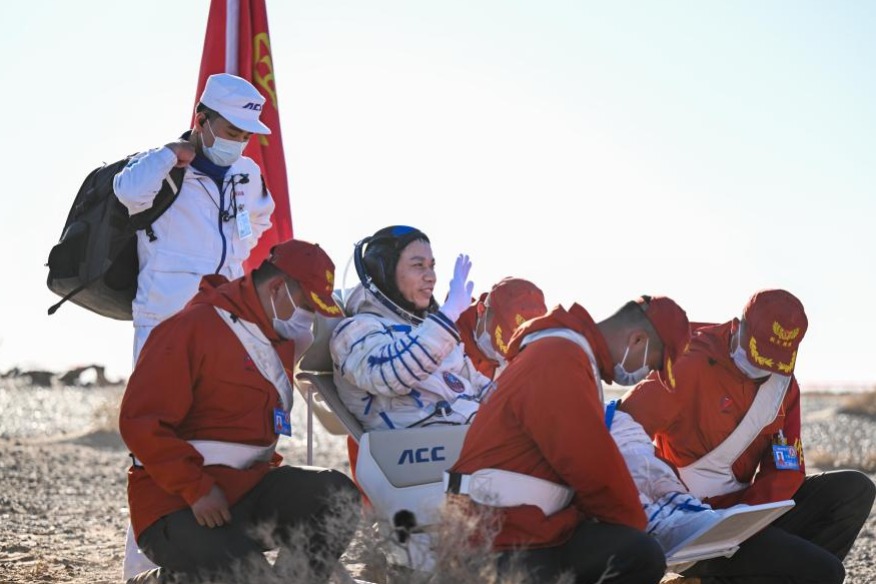Electronic exoskeleton lightens recovery workers' load
By ZHAO LEI | China Daily | Updated: 2020-12-18 08:34

During the pre-dawn search and recovery operation on Thursday for the reentry capsule of the Chang'e 5 robotic lunar probe, a futuristic machine provided some help to the recovery personnel.
Electronic exoskeletons were worn by recovery workers and enabled each person to carry heavy equipment that they would not have been able to do using their own strength.
With the help of the wearable machines, workers found it much easier to move heavy devices in strong winds and freezing precipitation between their helicopters and the reentry capsule's landing point on the snowy grasslands in Siziwang Banner of the Inner Mongolia autonomous region.
They were also able to quickly install communications, lighting and a power supply around the capsule, largely thanks to the exoskeleton, according to a statement from its developer, the 206th Institute under China Aerospace Science and Industry Corp Second Academy.
The statement quoted an unnamed recovery worker taking part in Thursday's operation as saying that it was exhausting for him to walk 20 to 30 meters through accumulations of snow without mechanical help.
But after putting on the exoskeleton, it was no problem for him to traverse 100 meters at a quick pace with a load of some 50 kilograms, he said.
Zhang Lijian, the exoskeleton's deputy chief designer, said Thursday's recovery marked the first time an exoskeleton had been used in any space-related mission anywhere.
He said his product is capable of saving as much as 60 percent of its wearer's physical strength when he or she moves hefty articles.
It also can operate for as long as 4 hours at a time, and can function well in temperatures ranging from -40 C to 70 C.
Another designer, Liu Hao, said that it allows a user to independently transport weighty loads that would normally require two people.
























